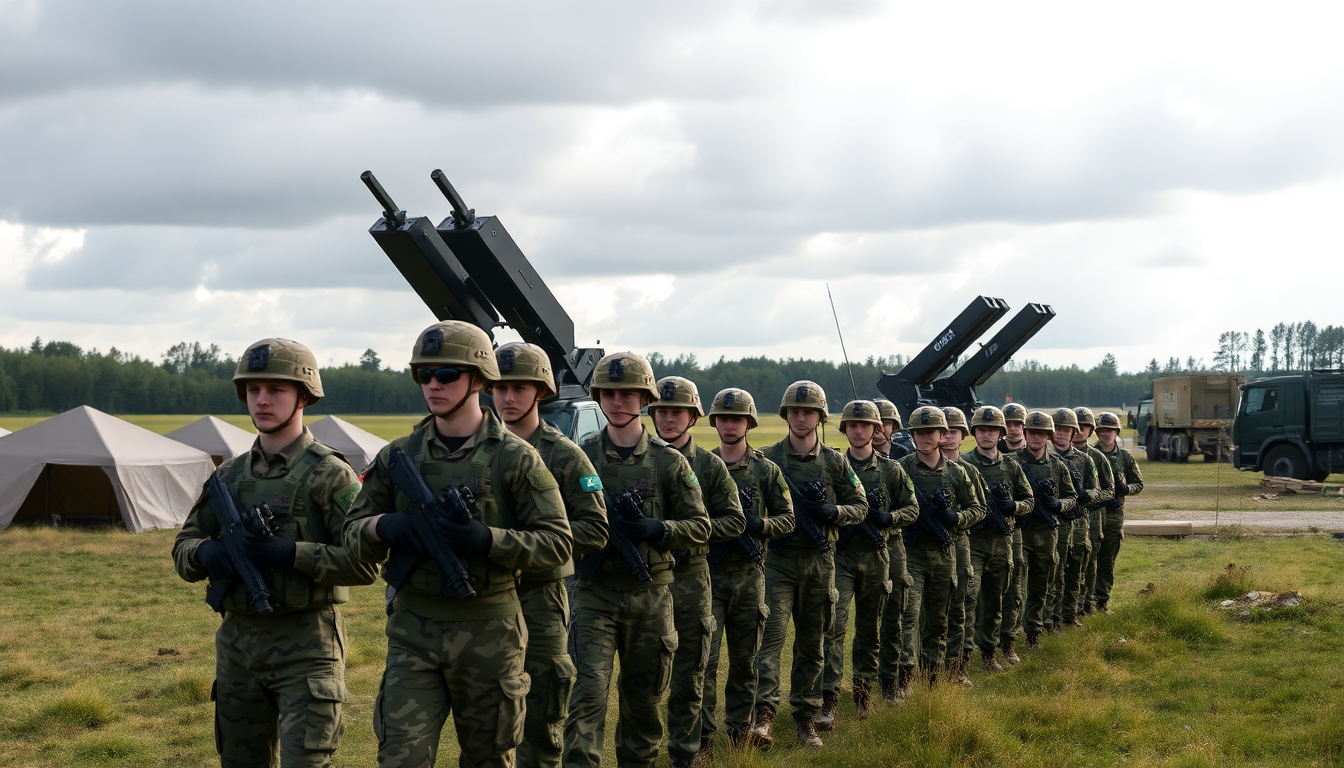Table of Contents
In a significant move, the Dutch government has just announced that it will ramp up military support to Poland, sending 300 troops and advanced Patriot air defense missile systems. But what’s driving this decision? Rising tensions in Eastern Europe, especially after a recent drone incident in Poland that authorities suspect might be linked to Russian provocations, have elevated the stakes. This situation highlights the ongoing security challenges faced by NATO member states in the region, particularly those that share borders with Ukraine.
The Current Military Landscape
Dutch Defence Minister Ruben Brekelmans’ announcement underscores a broader commitment to NATO’s defense framework, particularly in light of the ongoing conflict in Ukraine. The deployment of troops and air defense systems isn’t just about numbers; it’s about reinforcing NATO’s security and protecting critical supply routes to Ukraine. This strategic move mirrors similar military support from other NATO countries, strengthening the alliance’s collective defense strategy.
Let’s not forget the drone incident in Poland, which involved an object believed to be a Russian drone crashing in a cornfield. Thankfully, there were no casualties, but the explosion did shatter windows in nearby homes, raising serious concerns about civilian safety. Incidents like this are a stark reminder of the escalating tensions between NATO forces and Russian military activities in the area. So, what does this mean for everyday citizens?
Regional Responses and Military Moves
The Netherlands isn’t standing alone in its commitment to enhancing defenses in Eastern Europe. Germany has also stepped up by deploying five Eurofighter combat aircraft to Poland. This move comes at a crucial time, coinciding with joint military drills involving Russian and Belarusian forces. Additionally, Germany has mobilized even more Eurofighter jets to Romania, responding to recent Russian air strikes near Ukraine’s border. This is all about beefing up regional air defense capabilities.
This coordinated military response from NATO allies is a clear message: the alliance is resolute in deterring any potential aggression from Russia. Poland’s Deputy Prime Minister, Wladyslaw Kosiniak-Kamysz, has already condemned the drone incident as a blatant act of provocation, especially as discussions about peace in Ukraine are ongoing. It’s becoming clear that a unified and strategic military presence in Eastern Europe is essential for maintaining stability.
The Broader Picture for NATO and European Security
As European leaders—including Ukrainian President Volodymyr Zelenskyy—gather to discuss post-war security guarantees for Ukraine, the presence of NATO forces in Poland and Romania becomes even more significant. The recent military deployments reinforce NATO’s commitment to collective defense, especially in light of ongoing Russian military activities and Foreign Minister Sergey Lavrov’s warnings against excluding Moscow from security discussions.
These developments reveal the complexities of European security dynamics, where military readiness must go hand in hand with political negotiations. As NATO continues to adapt to this ever-evolving security landscape, the focus on strategic military support for member states will remain crucial in addressing both immediate threats and ensuring long-term stability in the region. So, how will these changes impact the security landscape in Europe moving forward? Only time will tell.


